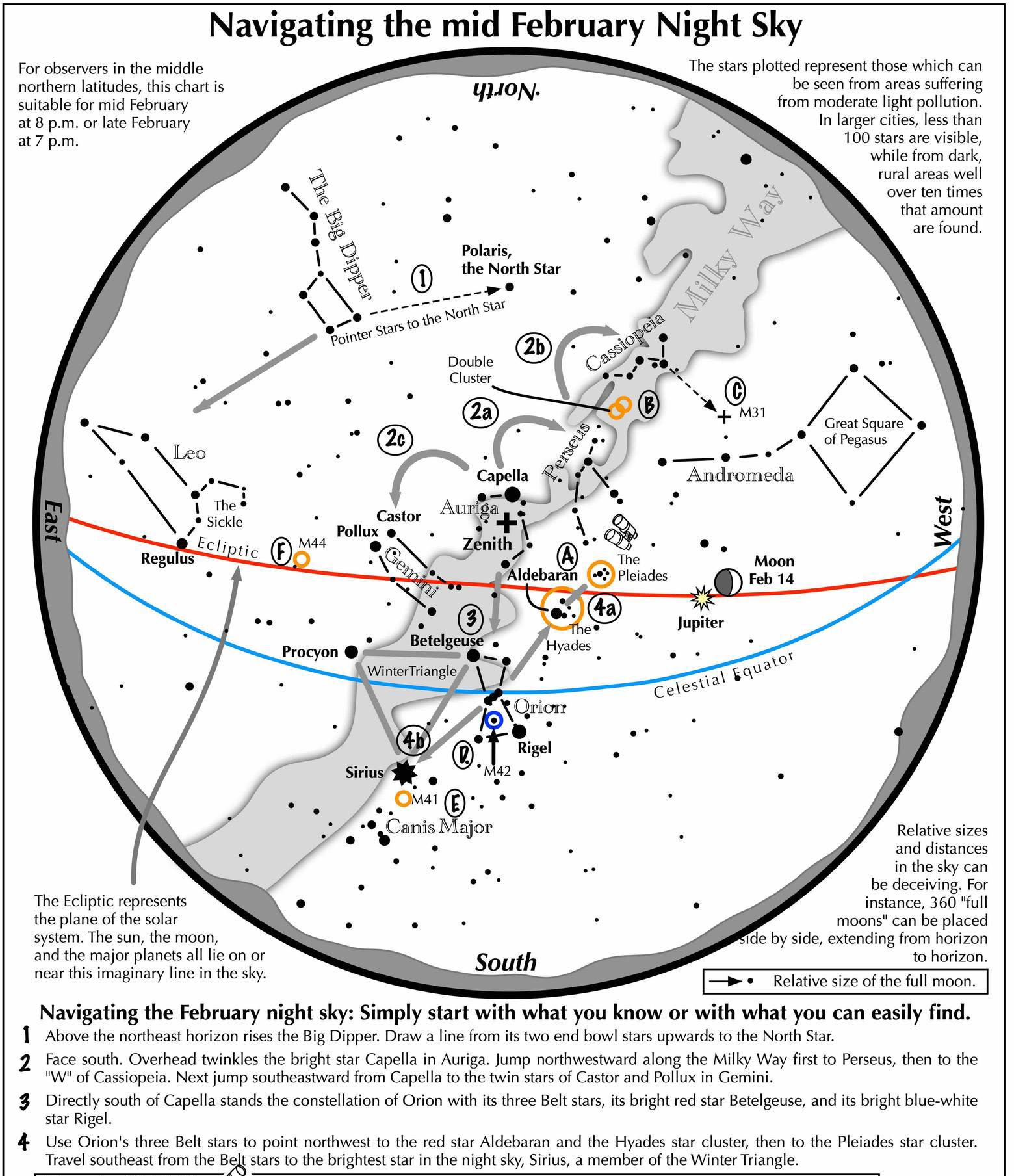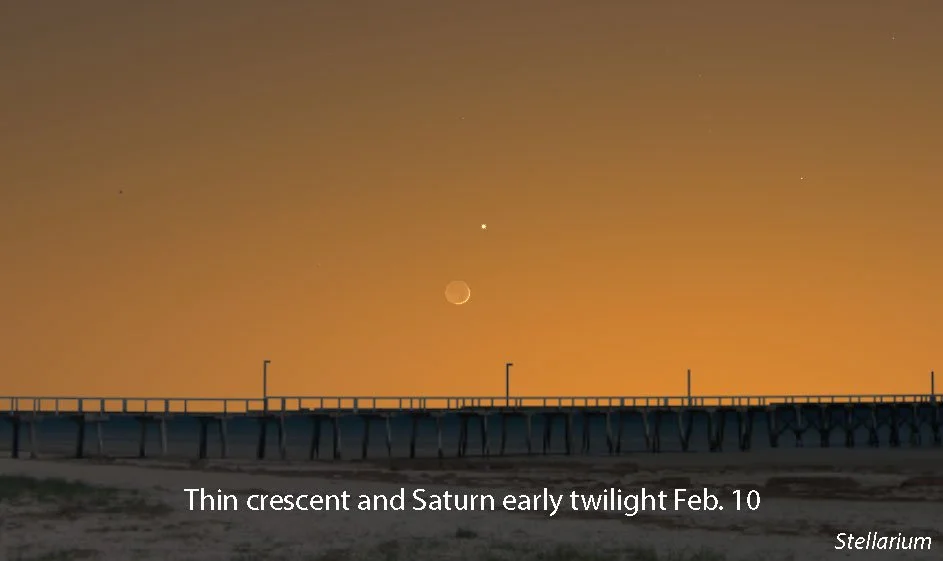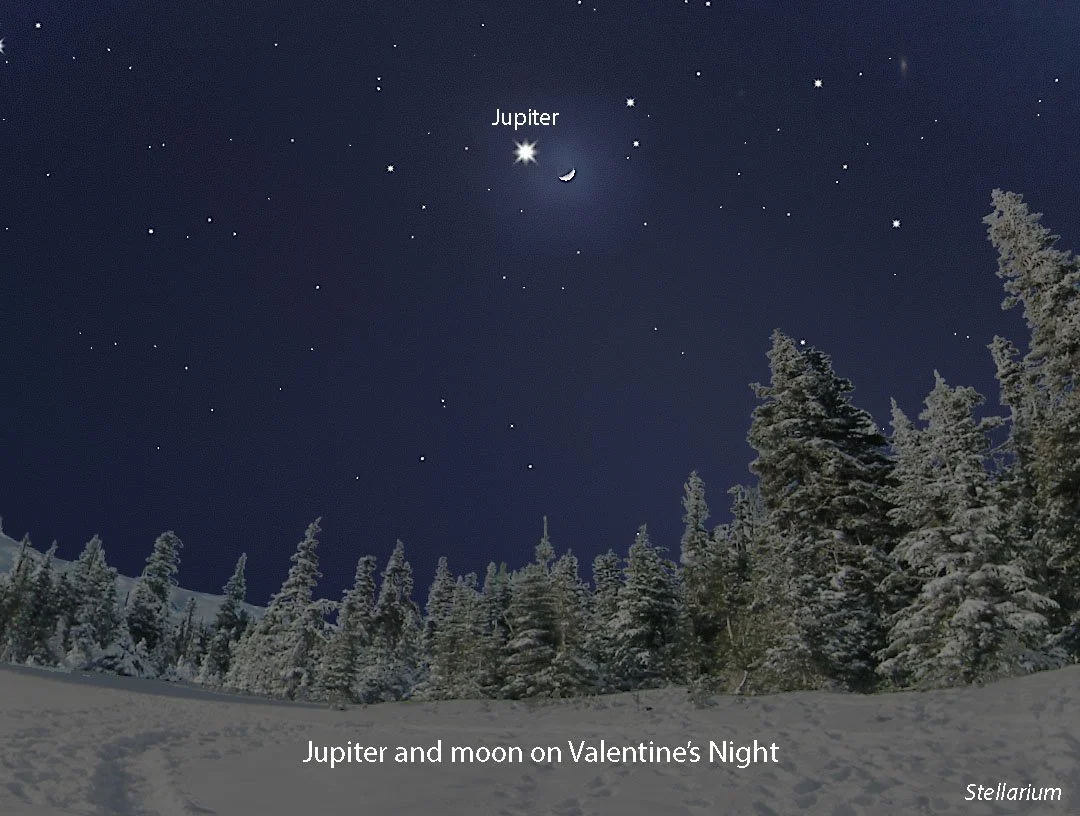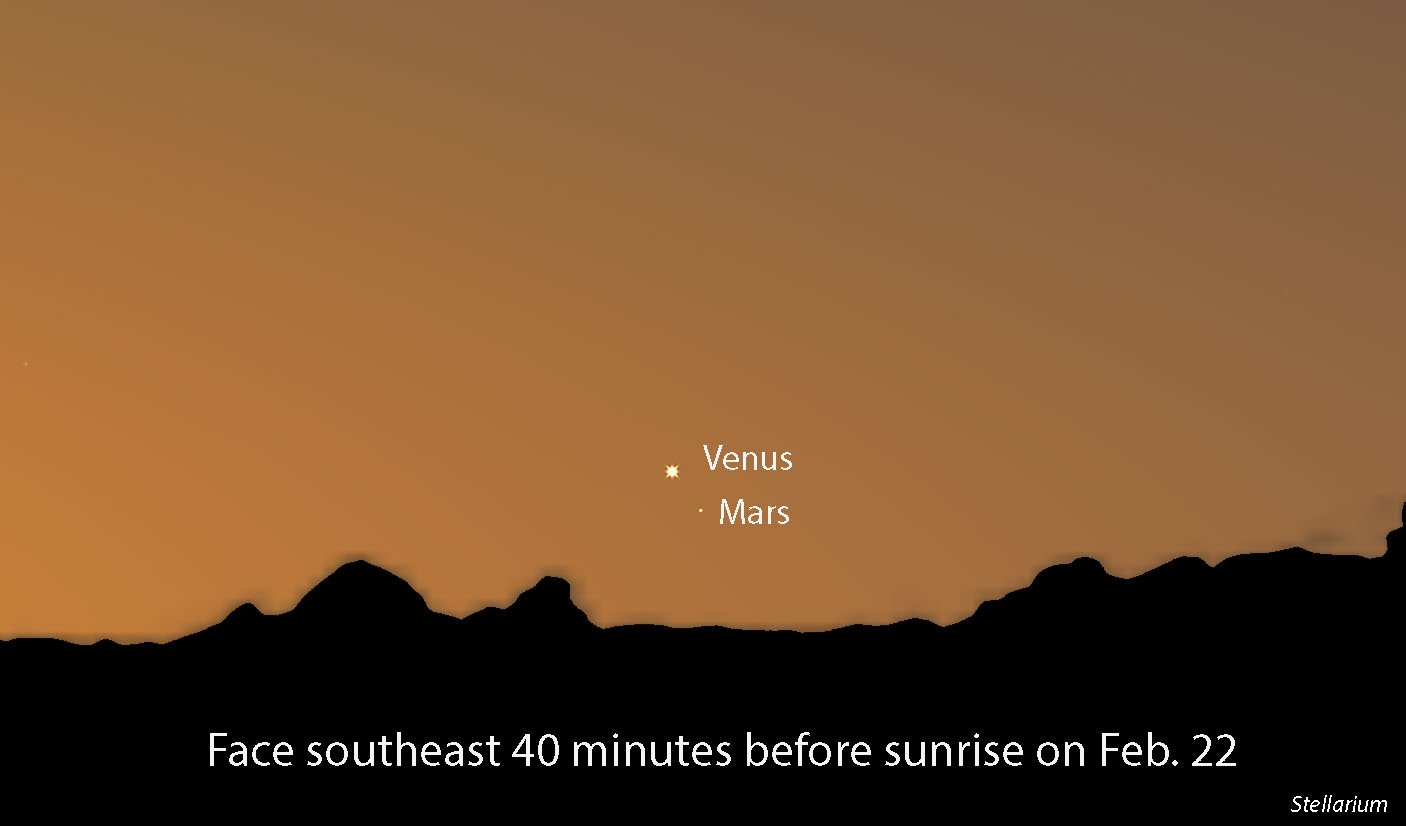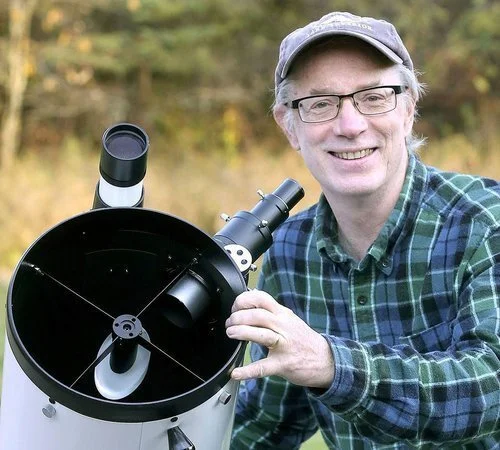February 2024 Night Sky Calendar
On Feb. 1 the sun sets nearly an hour later compared to the winter solstice. By month’s end we gain an additional 45 minutes of daylight. As daylight trickles in the winter constellations stand at their highest in the evening sky. You probably know them by now — Orion the Hunter,Canis Major the Big Dog, Canis Minor the Little Dog, Gemini the Twins, Auriga the Charioteer and Taurus the Bull. If you’re still unfamiliar download the free Stellarium Mobile app for Android and iPhone. Just do a Google search then install and point your phone skyward!
That’s not all that’s standing this winter. If you face northeast, you’ll see a bear balancing on its tail. Ursa Major the Great Bear is back! The brightest stars in the constellation outline the Big Dipper. Its handle – which it stands on during the evening hours − represents the bruin’s tail. Subtract the star at the top of the bowl and end of the tail and the remaining five form a loose cluster of gravitationally-bound stars called the Ursa Major Moving Group. The core of this gangly bunch lies about 80 light-years from Earth.
Jupiter is the sole remaining evening planet. It shines high in the southwestern sky at the end of evening twilight. Binoculars will show several of its brightest moons as well as reveal the planet’s shape. Take a look. You’ll see that Jupiter has a small disk. Even though it’s miniscule in comparison to the stars it’s so much closer.
Venus continues to light up the dawn sky, shining low in the southeast during morning twilight. A “new” planet returns to view this month — Mars. It’s still a little shy and faint so you’ll have to look for it with binoculars for now. (Note: for a larger version of the sky map posted here go to: https://bit.ly/48ONieE)
Navigating the February night sky
Events (a.m. indicates the event happens in the early morning sky):
Feb. 1 (a.m.) – Close conjunction of the waning gibbous moon and Virgo’s brightest star Spica. The moon will sit just 1.5 to 2 degrees to the left (east) of Spica.
Feb. 2 (a.m.) – Last quarter moon. It rises around 12:30 a.m. local time and stands highest in the southern sky during morning twilight.
Feb. 7 (a.m.) – Thin crescent moon and Venus appear together low in the southeastern sky at dawn.
Feb. 9 – New Moon. The moon lies in the same part of the sky as the sun and is not visible.
Feb. 10 – A chance to spot a super-thin crescent moon just a day past new. Find a location with an unobstructed southwest horizon and start looking 30-45 minutes after sunset. Binoculars will help. They’ll also assist in a further challenge — one last peek at Saturn. The ringed planet will shine faintly about 2.5 degrees above the moon in the same field of view. Find your local sunset time at https://www.timeanddate.com/sun/
Jupiter and moon on Valentine’s Night
Feb. 14 – Like lovers on Valentine’s Day Jupiter and the crescent moon will smooch tonight. Look for the twosome starting at dusk.
Feb. 16 – First quarter moon or half-phase. Tonight, the moon will shine alongside the Pleaides star cluster, a.k.a. the Seven Sisters. Look for the cluster just 2 degrees to the right (west) of the moon. Binoculars will provide a splendid view of the pair!
Feb. 20 – Waxing gibbous moon shines just 1.5 degrees below Pollux, the brightest star in Gemini the Twins. Pollux is home to the extrasolar planet Thestias, which is twice as massive as Jupiter and orbits the star every 1.6 years. Above and a little right of Pollux is his twin brother, Castor.
Feb. 22 – Welcome back, Red Planet! Venus and Mars will pair in a close conjunction less than 1 degree apart this morning very low in the southeastern sky 30-45 minutes before sunrise. You’ll need binoculars and an unobstructed horizon to spot the duo.
Feb. 23 and 24 – What, two Full Snow Moons? Well, sort of. The moon will be “fullest” on Feb. 24 at 6:30 a.m. CST, midway between the night before and after. To the eye it will appear identically full two nights in a row. On Feb. 23 it rises in Leo the Lion just above its brightest star Regulus. Find your local moonrise time at www.timeanddate.com/moon
Feb. 28 (a.m.) – Waning gibbous moon shines 2.5 degrees to the upper right (west) of Virgo’s brightest star Spica.
Feb. 29 – Spend some of Leap Day under the stars! You won’t get a chance to do it again for four years.
Bob King is an amateur astronomer, author, and passionate educator. He served as a photographer and photo editor at the Duluth News Tribune for 39 years and taught at the UMD planetarium. Bob’s work had a great impact on Voyageurs National Park. To achieve International Dark Sky Park certification, the park was required to host dark sky education events. Through the Night Sky Explorer webinars, the Conservancy was able to fulfill this component and help secure the certification for Voyageurs National Park. We can’t thank Bob King enough for sharing his talents and knowledge with the Conservancy community to support dark sky preservation.

